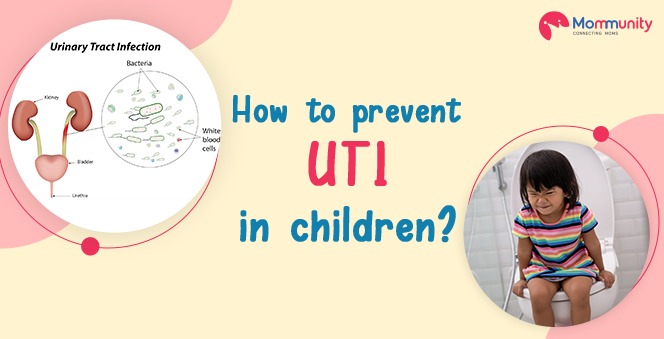A urinary tract infection (UTI) in children is quite common. If bacteria enter the urethra, they are usually flushed out when they urinate. However, when bacteria aren’t expelled out of the urethra, they start growing in the urinary tract. This causes an infection.
A urinary tract infection (UTI) in children is quite common. If bacteria enter the urethra, they are usually flushed out when they urinate. However, when bacteria aren’t expelled out of the urethra, they start growing in the urinary tract. This causes an infection.
The body parts in the urinary tract that are involved in urine production are:
- kidneys – filter blood and extra water to produce urine
- ureters- take urine to the bladder from the kidneys
- bladder- stores urine until it’s expelled from the body
- urethra – removes urine from the bladder when you urinate
How does your child catch a urinary tract infection? They can develop a UTI when bacteria enter the urinary tract through the urethra and into the body. Bladder infections and kidney infections are two types of UTIs most likely to affect children.
It has been observed that up to 8% of girls and 2% of boys will get a UTI by the time they turn 5. Girls are more susceptible to UTIs than boys because their urethra is shorter. Bacteria from the anus can easily enter the vagina and urethra.
CAUSES OF UTI IN CHILDREN
UTIs are most commonly caused by bacteria, which may enter the urinary tract from the skin around the anus or vagina. A common cause of UTIs is E. coli, which originates in the intestines. UTIs are caused when bacteria spread from the anus to the urethra.
RISK FACTORS FOR UTI IN CHILDREN
Girls are more likely to get UTIs, especially when their toilet training begins. Since their urethra is shorter the bacteria enter the urethra easily.
The urethra doesn’t normally bear bacteria. But certain circumstances can make it easier for bacteria to enter into your child’s urinary tract.
RISK FACTORS FOR A UTI IN CHILDREN:
- Bubble baths for girls
- tight-fitting female clothes
- poor toilet and hygiene habits
- holding urine for long periods of time
- vesicoureteral reflux, a birth defect that results in the abnormal backward flow of urine
SYMPTOMS OF URINARY TRACT INFECTION IN CHILDREN
Symptoms of a UTI depend on the degree of infection and your child’s age. Infants and very young children may not show any symptoms as such. In younger children, symptoms can be very general like:
- fever
- poor appetite
- vomiting
- diarrhea
- the overall feeling of illness
Additional symptoms to check to know if your child has a bladder infection:
- blood in the urine
- cloudy urine
- foul-smelling urine
- pain, stinging, or burning with urination
- frequent urination
If the infection has traveled to the kidneys, the condition is more serious and the symptoms will be more intense such as:
- high fever
- nausea and vomiting
- side or back pain
- severe abdominal pain
- severe fatigue
TREATMENT OF URINARY TRACT INFECTION IN CHILDREN
The treatment includes prompt antibiotic treatment to prevent kidney damage. The type of bacteria and the severity of your child’s infection will determine the type of antibiotic used and the length of treatment.
The most common antibiotics used for treating children are:
- amoxicillin
- amoxicillin and clavulanic acid
- cephalosporins
- nitrofurantoin
- sulfamethoxazole-trimethoprim
If it is a simple bladder infection, it will require at-home treatment with oral antibiotics. However, more severe infections may require hospitalization and IV fluids or antibiotics.
Hospitalization becomes necessary if your child:
- is younger than 6 months old
- has a high fever that isn’t improving
- likely has a kidney infection, if the child is very ill or young
- has a blood infection from the bacteria
- is dehydrated, vomiting, or unable to take oral medications for any other reason
How to prevent a URINARY TRACT INFECTION in children
The possibility of your child developing a UTI can be reduced with some proven techniques –
- Avoid bubble baths for girls. It can cause bacteria and soap to enter the urethra.
- Avoid tight-fitting clothes for your girl child.
- Make sure that your child drinks enough fluids.
- Keep your child away from caffeine as much as possible as it can cause bladder irritation.
- Change diapers frequently in younger children.
- Teach older children proper genital hygiene.
- Encourage your child to use the bathroom frequently rather than holding in urine.




